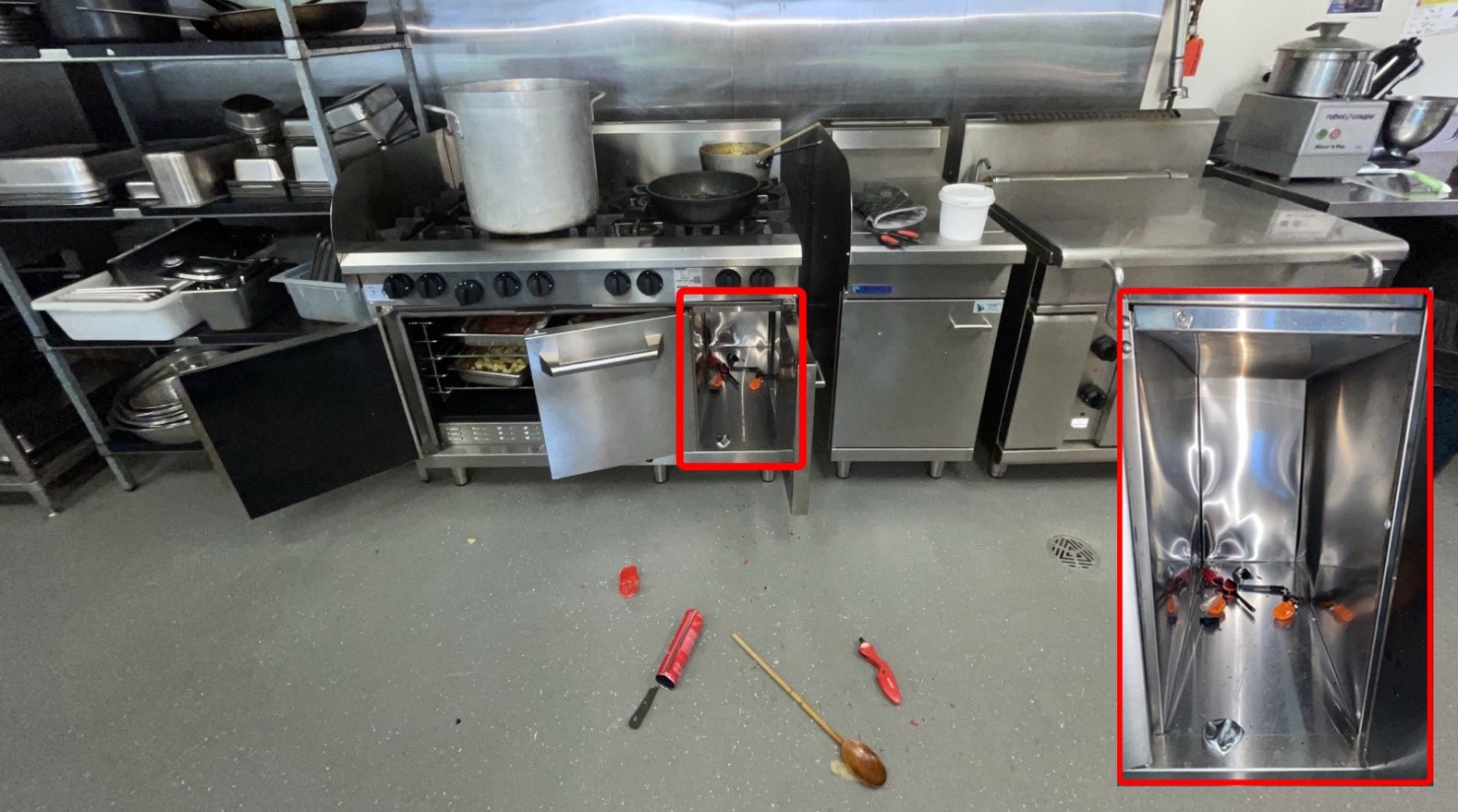Butane canister explosion injures kitchen staff
Background
A worker suffered burn injuries last week in Palmerston after a butane gas canister exploded in a kitchen.
Initial enquires indicate a butane gas canister, which was stored in a compartment of a commercial oven, may have exploded due to radiant heat from the appliance. At the time of the incident, the oven next to, and the cooktop directly above the storage compartment were in use.
The worker received burns to both arms and the face.

Disclaimer
The above information is based on preliminary findings from NT WorkSafe’s initial enquiries. Enquiries are ongoing to determine the cause of the incident and the appropriate regulatory response.
Safety Information
Butane gas canisters are classed as dangerous goods and also a hazardous chemical, and must be handled and stored appropriately to prevent incidents that can result in serious injuries or even death.
NT WorkSafe strongly urges all workplaces that use or store butane gas canisters or other similar items to:
- Read the gas canister’s manufacturer’s safety instructions for information on appropriate storage locations.
- Canister labelling may contain hazard symbols to warn of specific dangers. Information on the meaning of these symbols are in the Labelling of workplace hazardous chemicals Code of Practice.
- It is generally recommended to store pressurised canisters containing flammable liquids or gases in a well ventilated place and kept well away from heat.
- Read the manufacturer’s safety instructions for any appliances being used in the vicinity of where pressurised canisters and other flammable materials are being stored.
- Conduct a risk assessment using the How to manage work health and safety risks Code of Practice on the current storage arrangements of pressurised canisters and other flammable materials in your workplace.
- Follow the Work health and safety consultation, cooperation and coordination Code of Practice, and consult your workers and their health and safety representatives when deciding how to manage the risks in the workplace, including when reviewing and making changes to existing processes.
- Inspect the canister(s) for signs of wear and tear (damage) and remove those showing damage to a safe location away from potential heat sources.
Further Information
For further information, please refer to the following.